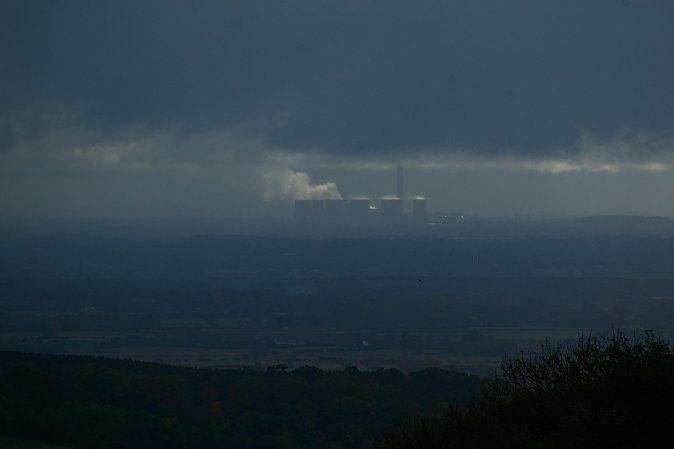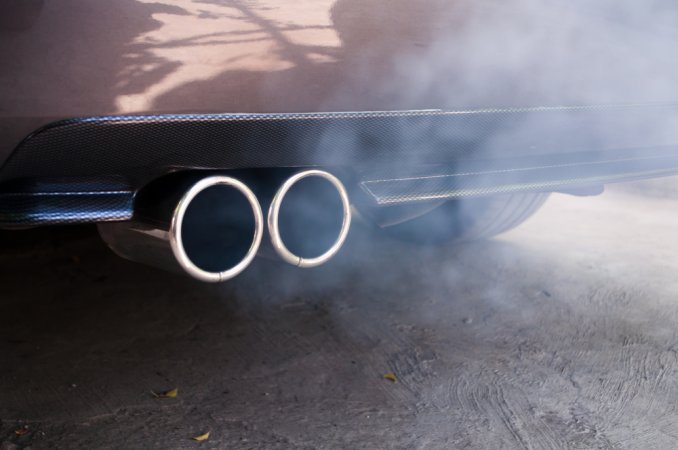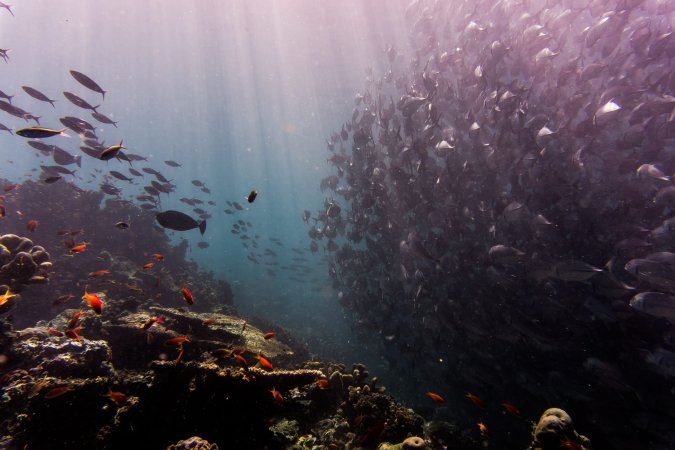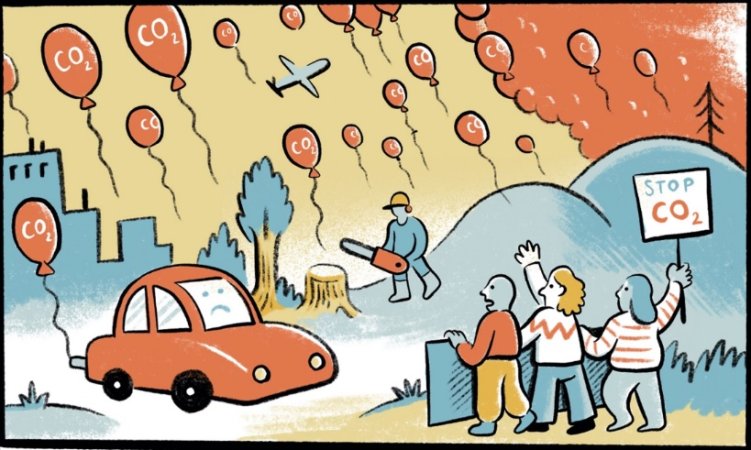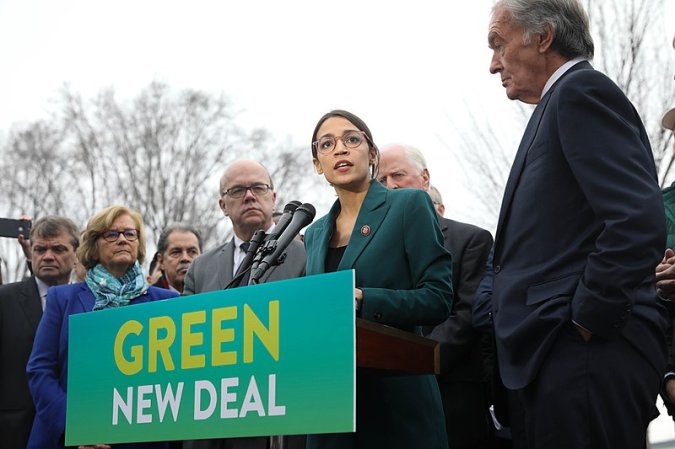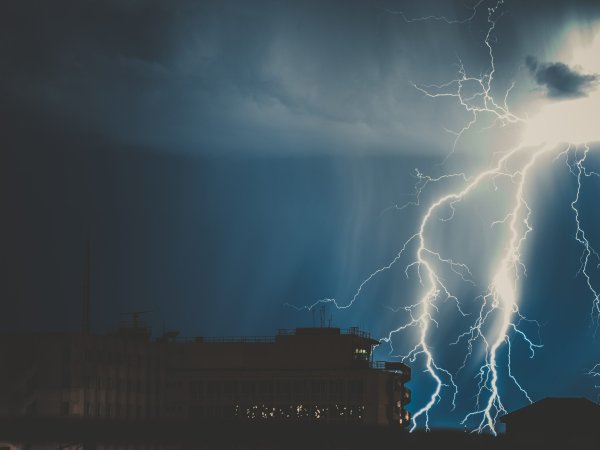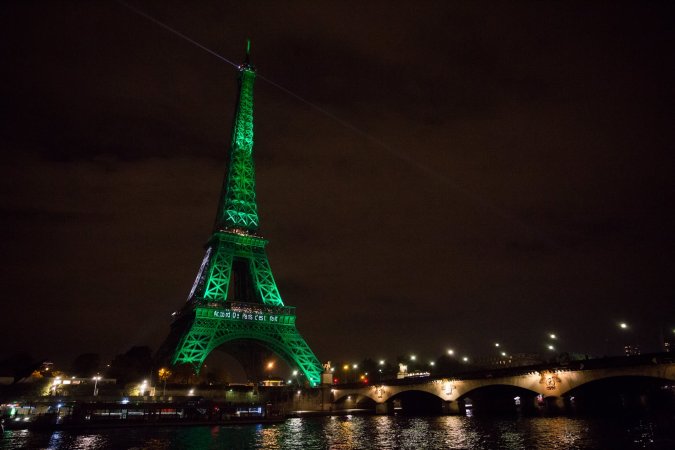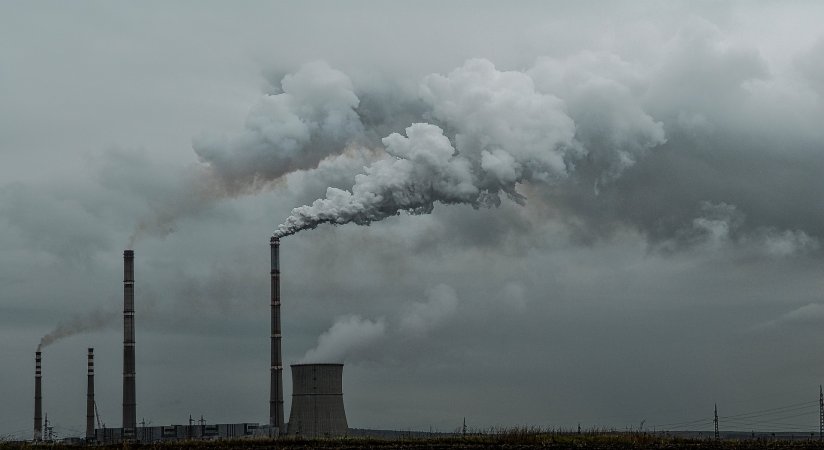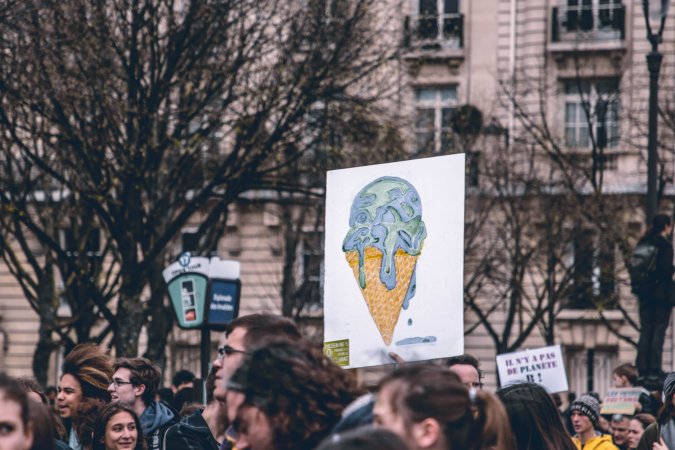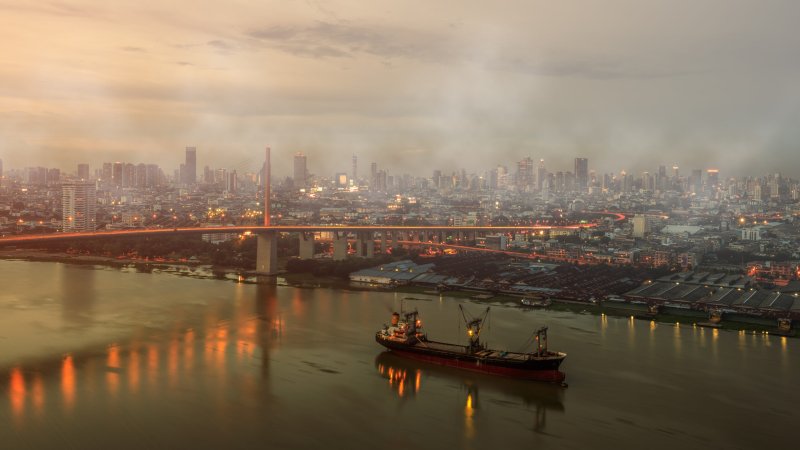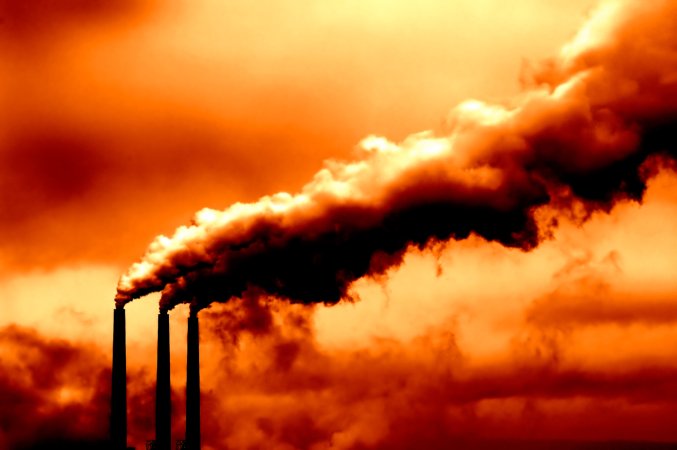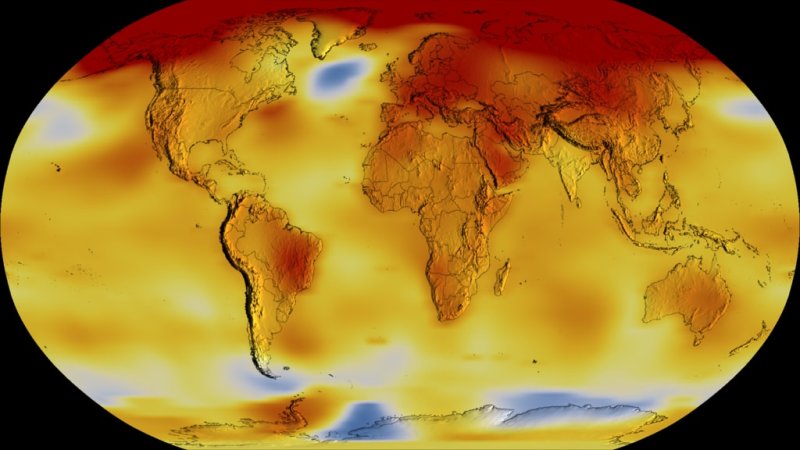

On Sunday, the New Yorker published an essay titled “What If We Stopped Pretending,” by Jonathan Franzen. The subtitle reads: “The climate apocalypse is coming. To prepare for it, we need to admit that we can’t prevent it.”
Franzen goes to explain that—based on the “modelling” he’s done in his head—there is no scenario in which we can avoid 2ºC of warming, that the challenge is simply insurmountable, and that human nature is at odds with the mobilization required. Perhaps it’s fair to be a pessimist in these times: the climate has indeed warmed by just over 1ºC while carbon emissions continue to climb. It’s going to take sweeping changes to our industrial and transportation sectors to change this, and that probably won’t happen without policies that mandate such an overhaul. “Particularly in the case of the 1.5 degree target, it would be very, very difficult to meet at this point,” says Zeke Hausfather, director of climate and energy at the Breakthrough Institute, an environmental think tank. “The challenge there is that the only real way to get to 1.5ºC without relying on sort of global scale engineering to remove carbon from the atmosphere is to cut all global emissions to zero in the next 30 years.”
But however hard it might be to meet our climate goals, Franzen’s diatribe goes a step beyond just pessimism. He’s claiming that those advocating for climate action are practically delusional, and that renewable energy projects and high speed trains are futile efforts to stop a planet “spinning out of control.” His argument, though, rests on a mischaracterized—if not just plain wrong—understanding of several climate science and policy points, as experts have pointed out. With that in mind, we’d like to offer a few corrections:
After a 2ºC increase, the planet will continue to warm no matter what we do
“In the long run, it probably makes no difference how badly we overshoot two degrees; once the point of no return is passed, the world will become self-transforming,” writes Franzen. “Our atmosphere and oceans can absorb only so much heat before climate change, intensified by various feedback loops, spins completely out of control.” Except that according to actual climate models, this is not how it works.
Those positive feedback loops are real, and going on right now. As reflective sea ice melts and reveals the dark ocean beneath, more heat is absorbed by the water than would be by ice. This in turn warms the planet’s surface more, melting more ice, leading to heat absorbed, and so on. Another example is permafrost. When this frozen soil melts, microbes spring to life and start eating up the thawed organic carbon, releasing methane and carbon dioxide into the air. These greenhouse gases warm the planet, which in turn leads to more permafrost thawing.

But there’s little evidence that these feedbacks will accelerate out of control if the planet warms by 2ºC, as Franzen suggests. First of all, 2ºC—and 1.5ºC—are not magical tipping points after which life on Earth is doomed. “To the best of our knowledge, there’s not much evidence of specific thresholds that, if we pass, the climate will run out of control,” says Hausfather. “We certainly can’t say as they did in the New Yorker piece that if we pass two degrees, then suddenly some dramatic feedback kicks in and dooms human civilization. That’s not at all supported by the science.”
Those thresholds are more like estimates of when critical ecosystems, like coral reefs, will become imperiled, says Hausfather. They also approximate when climate impacts will get especially troublesome for humans—through changes like more extreme heat waves, longer droughts, or heavier storms. It’s complicated because in reality the disastrous effects of relentless greenhouse gas spewing won’t come all at once, so scientists and policy makers use thresholds as a guidance for how to keep the environment relatively stable. “Two degrees is also a world that for most ecosystems and for most of humanity is fairly manageable,” adds Hausfather.
But there’s little evidence that the sort of runaway feedback loops that Frazen suggests will happen at 2ºC actually will. “There’s a pretty good linear relationship in climate models between the cumulative emissions we’ve done—the total emissions to that date—and the amount of warming you get,” says Hausfather. “There’s not some dramatic jump there.” Still, there are certainly unknowns, since humans are conducting a science experiment unparalleled in the Earth’s history. “The further we push the Earth out of the range it’s been in for the last couple million years, the more there is a possibility that we could tip it to a permanently warmer state,” says Hausfather. “But we don’t know where that point is.”
There’s no point in making big changes to curb emissions
In Franzen’s mind, it seems that taking action on climate change amounts to denial: “You can keep on hoping that catastrophe is preventable, and feel ever more frustrated or enraged by the world’s inaction. Or you can accept that disaster is coming, and begin to rethink what it means to have hope.” And again, in this quote: “The evil of the Republican Party’s position on climate science is well known, but denial is entrenched in progressive politics, too, or at least in its rhetoric.” He continues to use this line of thinking to cast doubt on the relevance of high speed rail projects, the Green New Deal, and large-scale renewables.
If his point about the supposed out-of-control feedback loops was true, maybe he’d be right. But since the models show a more linear relationship between increasing emissions and temperatures, it still makes sense to lower emissions—even if an optimistic goal is unattainable. The impacts to ecosystems and humans will just get worse and worse with more carbon in the atmosphere, so if we miss targets like 1.5ºC or 2ºC, should still limit our emissions as much as possible. “If we take our time to get the political will to seriously cut emissions and end up in a world that’s 2.5 degrees, that’s still infinitely better than a world where we just do nothing at all and end up at 3.5 degrees or 4 degrees,” says Hausfather.
Moreover, there are few experts talking about “solving” climate change, as Frazen says is part of the delusion of climate change. Sure, maybe in the future carbon capture plants will be deployed across the globe, or another way to reverse our damage will be invented. But right now, most scientists and policy makers are focused on how to reduce emissions and adapt to a warming world. “We’ve already experienced 1.1 or 1.2 degrees of climate change and we’re not going to undo that,” says Hausfather. “The real challenge is mitigating the additional warming.”
Atmospheric models don’t work that way
Scientists are also unhappy with Franzen’s attempt to explain atmospheric models, quoted here: “[Scientists] take a host of variables and run them through supercomputers to generate, say, ten thousand different simulations for the coming century, in order to make a “best” prediction of the rise in temperature. When a scientist predicts a rise of two degrees Celsius, she’s merely naming a number about which she’s very confident: the rise will be at least two degrees. The rise might, in fact, be far higher.”

“That’s a pretty big misrepresentation about the way that climate modelling works,” says Hausfather. “We specifically define these targets like two degrees based on a 66% chance of avoiding that level of warming.” Scientists use those supercomputers to see how future emissions scenarios—what types of energy we use and the greenhouse gases it will generate—will warm the planet. Different models are more “sensitive,” meaning an increase in emissions leads to more warming. The end result—the amount of warming we’ll experience—is an average of the temperatures predicted across those models. “The estimate that’s published is not the low end, as the author of the New Yorker piece claimed,” says Hausfather. “Usually [it’s] the average with the uncertainty around that average expressed clearly and a lot of climate impact studies are then based on taking that uncertainty into account.”
The Green New Deal also doesn’t work that way
Saving the planet is going to really suck, it seems, according to Franzen. Here’s how he describes averting 2ºC of warming: “The first condition is that every one of the world’s major polluting countries institute draconian conservation measures, shut down much of its energy and transportation infrastructure, and completely retool its economy.” And this: “overwhelming numbers of human beings, including millions of government-hating Americans, need to accept high taxes and severe curtailment of their familiar life styles without revolting.”
This is, at best, a gross oversimplification of environmental policies.
First, there are a number of regulations and incentives that could potentially keep us within a relatively safe threshold of warming. Let’s start with a carbon tax, which Frazen (and, to be fair, many Americans) seems afraid of. This policy would work by instituting a cost per ton of carbon dioxide released into the atmosphere, thereby creating a cost for polluting the environment. And yes, it could indeed ripple down to unpleasant consequences for consumers. “If you have a $50-a-ton carbon tax the average American would spend $25 more a month on gasoline,” says Leah Stokes, an assistant professor in environmental policy at the University of California, Santa Barbara.
And while for some that might just be a small annoyance, for Americans already struggling to pay for their gas that extra $25 could make it harder to make ends meet. That’s why having such a carbon tax that isn’t somehow modified to be more equitable is considered “regressive”—it punishes the poor more than the rich.
But, what Franzen doesn’t mention is that this is exactly what policies like the Green New Deal—which he pokes at for its proponents’ “rhetoric” of “stopping” climate change—hope to fix. Policy makers and activists pushing for a Green New Deal want to essentially marry social and industrial policy such that making the switch to a net-zero economy doesn’t leave people without jobs. “If you’re going to tackle climate change, a number of people working in the fossil fuel sector will have to get a new job,” says Stokes. “The Green New Deal is, rather than pushing that onto people, [saying] ‘what we’re going to do is, as a society, we’re going to make a decision that we’re going to get off fossil fuels and we’re going to make sure that no American is left behind during that process.’”
This is all pointless
Franzen’s thesis, in the end, aims to rob us of our motivation to act. But actual climate scientists have been saying for years now that this is exactly the opposite of what we need to do.
“The apocalypse is not inevitable,” says Hausfather. “We have complete control as a society about whether we end up at two degrees warming or four degrees warming this century. In many ways, these sort of apocalyptic messages really get in the way of action.”




